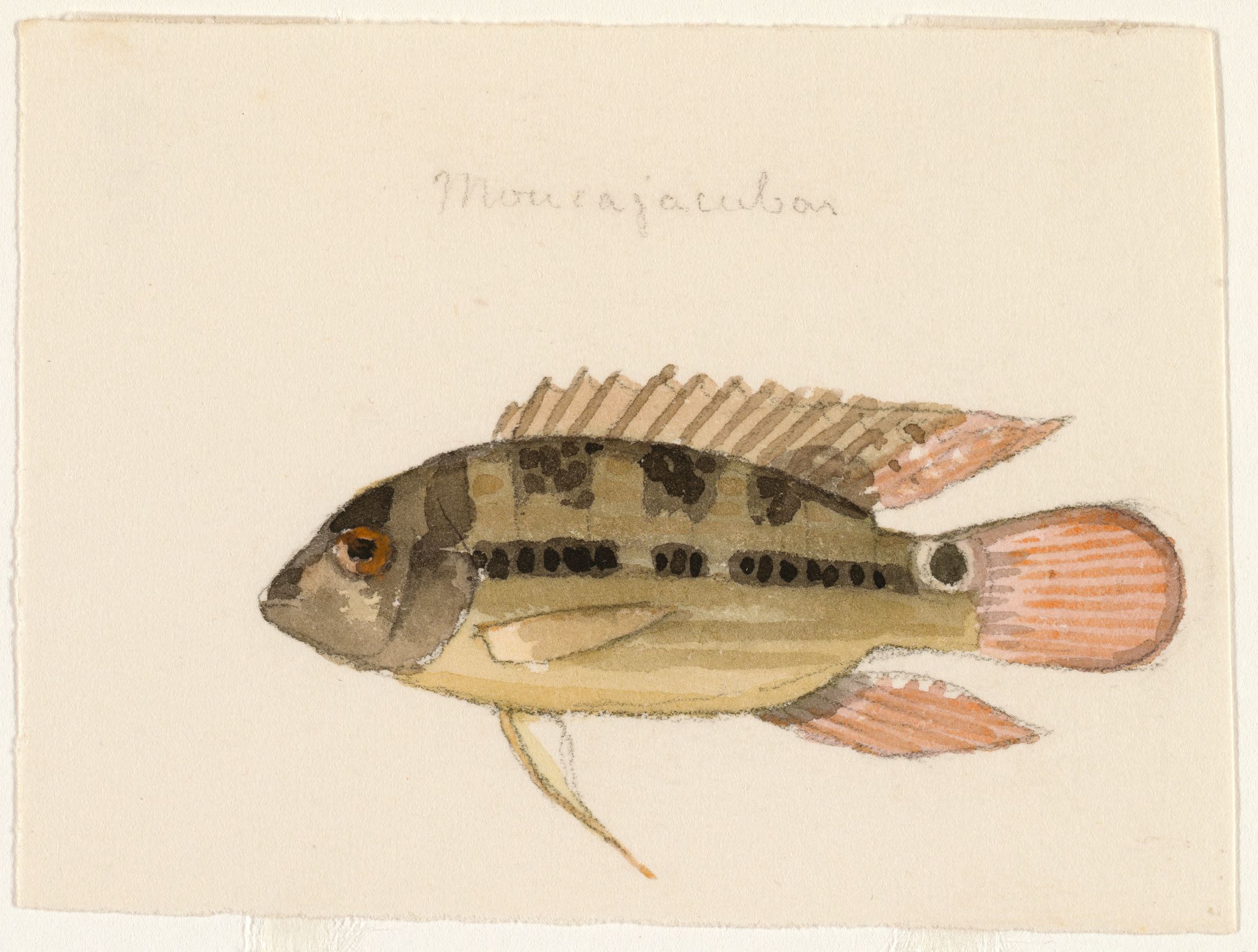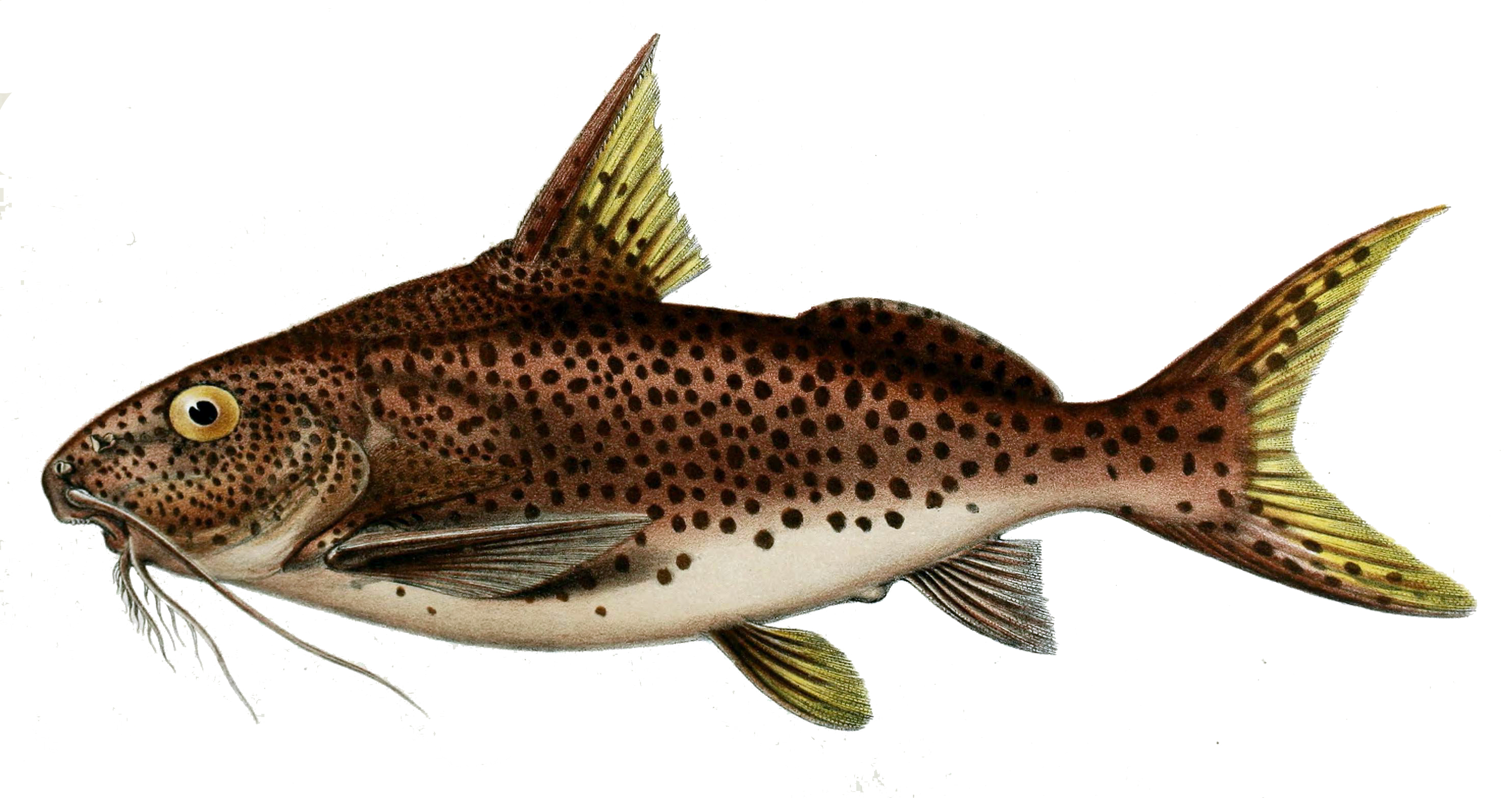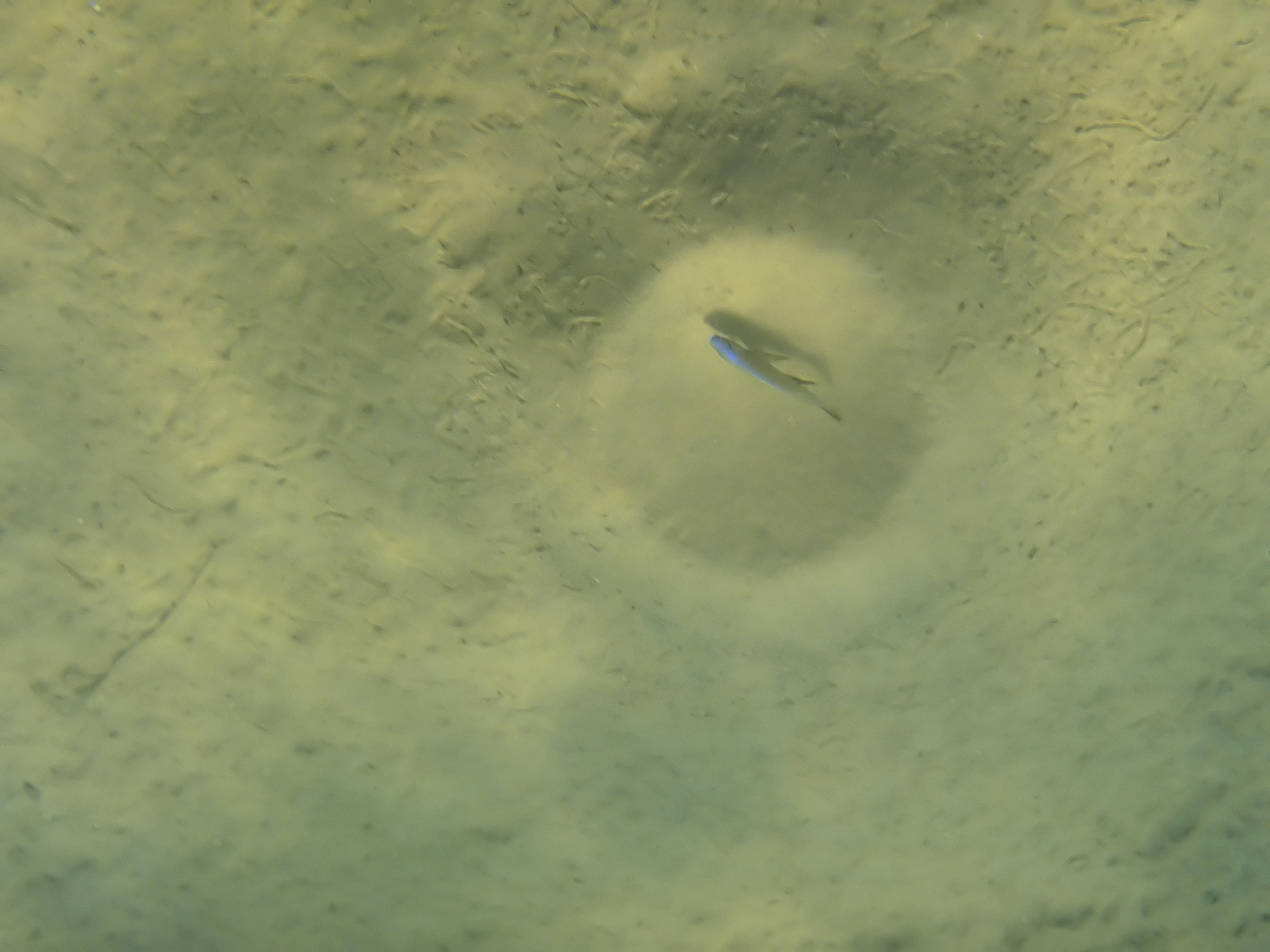|
Mouthbrooding
Mouthbrooding, also known as oral incubation and buccal incubation, is the care given by some groups of animals to their offspring by holding them in the mouth of the parent for extended periods of time. Although mouthbrooding is performed by a variety of different animals, such as the Darwin's frog, fish are by far the most diverse mouthbrooders. Mouthbrooding has evolved independently in several different families of fish. Mouthbrooding behaviour Paternal mouthbrooders are species where the male looks after the eggs. Paternal mouthbrooders include the arowana, various mouthbrooding bettas and gouramies such as '' Betta pugnax'', and sea catfish such as '' Ariopsis felis''. Among cichlids, paternal mouthbrooding is relatively rare, but is found among some of the tilapiines, most notably the black-chin tilapia '' Sarotherodon melanotheron''. In the case of the maternal mouthbrooders, the female takes the eggs. Maternal mouthbrooders are found among both African and South American ... [...More Info...] [...Related Items...] OR: [Wikipedia] [Google] [Baidu] [Amazon] |
Cichlidae
Cichlids () are a large, diverse, and widespread family of percomorph fish in the family Cichlidae, order Cichliformes. At least 1,760 species have been scientifically described, making it one of the largest vertebrate families, with only the Cyprinidae being more speciose. New species are discovered annually, and many species remain undescribed. The actual number of species is therefore unknown, with estimates varying between 2,000 and 3,000. They are native to the Neotropics, Africa (including Madagascar), the Middle East, and the Indian subcontinent, although some species have been introduced worldwide. Many cichlids, particularly tilapia, are important food fishes, while others, such as the '' Cichla'' species, are valued game fish. The family also includes many popular freshwater aquarium fish kept by hobbyists, including the angelfish, oscars, and discus. Cichlids have the largest number of endangered species among vertebrate families, most in the haplochrom ... [...More Info...] [...Related Items...] OR: [Wikipedia] [Google] [Baidu] [Amazon] |
Astatotilapia Burtoni
''Astatotilapia burtoni'' is a species of fish in the family Cichlidae. It is found in Lake Tanganyika and its surrounding waterways, including parts of Burundi, Rwanda, Tanzania, and Zambia. Its natural habitats are rivers, intermittent rivers, swamps, freshwater lakes, freshwater marshes, intermittent freshwater marshes, and inland deltas. ''Astatotilapia burtoni'' has been used as a model organism to study the behaviors and physical systems of cichlids, including their development and embryogenesis. Moreover, the phylogenetic position of this particular species makes it an ideal model system for comparative genomic research. ''A. burtoni'' belongs under the haplochromines, which is the lineage of cichlids with the most species, and has been discovered to be a sister group to both the Lake Victoria region superflock (which has about 600 species) and the species flock of Lake Malawi (which has about 1,000 species). Social behavior Reversible male social roles The males of ... [...More Info...] [...Related Items...] OR: [Wikipedia] [Google] [Baidu] [Amazon] |
Synodontis Multipunctatus
''Synodontis multipunctatus'', also known as the cuckoo catfish, cuckoo squeaker, or multipunk, is a small catfish from Lake Tanganyika, one of the lakes in the Great Rift Valley system in Africa. It is a brood parasite upon mouthbrooding cichlids. This species grows to a length of TL. This species is a minor component of local commercial fisheries. General ''Synodontis multipunctatus'' is one of a number of species of upside-down catfish in Lake Tanganyika, which is more famous for its cichlids. It gathers in large schools at depths of about in the lake. ''S. multipunctatus'' is notable for its breeding behaviour - it is a brood parasite, similar to the cuckoo from which it takes its common name. Lake Tanganyika is home to a number of mouthbrooding cichlids, which care for their eggs and young by carrying them in their mouth. ''S. multipunctatus'' uses these, particularly '' Ctenochromis horei'' and '' Simochromis babaulti'', as unwitting caretakers for their children. The ... [...More Info...] [...Related Items...] OR: [Wikipedia] [Google] [Baidu] [Amazon] |
Apogonidae
Cardinalfishes are a family, Apogonidae, of ray-finned fishes found in the Atlantic, Indian, and Pacific Oceans; they are chiefly marine, but some species are found in brackish water and a few (notably '' Glossamia'') are found in fresh water. A handful of species are kept in aquariums and are popular as small, peaceful, and colourful fish. The family includes about 370 species. They are generally small fish, with most species being less than , and are often brightly coloured. They are distinguished by their large mouths, and the division of the dorsal fin into two separate fins. Most species live in tropical or subtropical waters, where they inhabit coral reefs and lagoons. They are nocturnal, spending the day in dark crevices within the reef. At least some species brood their eggs inside the mouths of the males. Males do not feed during this incubation period. Males incubate the eggs in their mouth due to having longer heads and a larger jaw, which females do not acquire. ... [...More Info...] [...Related Items...] OR: [Wikipedia] [Google] [Baidu] [Amazon] |
Ariopsis Felis
The hardhead catfish (''Ariopsis felis'') is a species of sea catfish from the northwest Atlantic and Gulf of Mexico, and similar to the gafftopsail catfish (''Bagre marinus''). It is one of four species in the genus '' Ariopsis''. The common name, hardhead catfish, is derived from the presence of a hard, bony plate extending rearward toward the dorsal fin from a line between the catfish's eyes.Webster, Pearse. Hardhead Catfish. South Carolina Department of Natural Resources. http://www.dnr.sc.gov/cwcs/pdf/Hardheadcatfish.pdf It is an elongated marine catfish that reaches up to in length and in weight. Their typical weight is less than , but they commonly reach up to . They are often a dirty gray color on top, with white undersides. Habits, distribution, and characteristics Hardhead catfish are found mostly in the near-shore waters of the Western Atlantic Ocean, around the southeast coast of the United States, around the Florida Keys and the coast of the Gulf of Mexico. ... [...More Info...] [...Related Items...] OR: [Wikipedia] [Google] [Baidu] [Amazon] |
Asian Arowana
The Asian arowana (''Scleropages formosus'') comprises several phenotypic varieties of freshwater fish distributed geographically across Southeast Asia. While most consider the different varieties to belong to a single species, work by Pouyaud ''et al.'' (2003) differentiates these varieties into multiple species. They have several other common names, including Asian bonytongue, dragonfish, and a number of names specific to the different color varieties. Native to Southeast Asia, Asian arowanas inhabit blackwater rivers, slow-moving waters flowing through forested swamps and wetlands. Adults feed on other fish, while juveniles feed on insects. These popular aquarium fish have special cultural significance in areas influenced by Chinese culture. The name 'dragonfish' stems from their resemblance to the Chinese dragon. This popularity has had both positive and negative effects on their status as endangered species. Evolution and taxonomy Like all members of the Osteoglossidae, As ... [...More Info...] [...Related Items...] OR: [Wikipedia] [Google] [Baidu] [Amazon] |
Ariidae
The Ariidae or ariid catfish are a family (taxonomy), family of catfish that mainly live in Marine (ocean), marine waters with many freshwater and brackish water species. They are found worldwide in tropical to warm temperate zones. The family includes about 143 species. Fossilized pectoral spines and skull bone fragments of ariid catfish are known from the Late Cretaceous (Campanian and Maastrichtian) of Argentina, which are among the oldest known remains of Siluroidea, siluroid catfish. Taxonomy The relationships of this family are not yet clear. Two of the genus, genera, ''Gogo (fish), Gogo'' and ''Ancharius (fish), Ancharius'', have been moved to a separate family called Anchariidae. The Ariidae are divided into three subfamilies: ''Galeichthys'' is the only genus classified in the subfamily Galeichthyinae and similarly ''Bagre (fish), Bagre'' is the only genus in the subfamily Bagreinae, while the rest of the genera are classified in the subfamily Ariinae. Previously, the ... [...More Info...] [...Related Items...] OR: [Wikipedia] [Google] [Baidu] [Amazon] |
Mbuna
Mbuna (pronounced Mmm-boo-nah ) is the common name for a large group of African cichlids from Lake Malawi, and are members of the haplochromine tribe within the family Cichlidae. The name ''mbuna'' means "rockfish" in the language of the Tonga people of Malawi.Loiselle Paul V. (1988) ''A Fishkeepers Guide to African Cichlids.'' p 97. Salamander Books, London & New York, . As the name implies, most mbuna are cichlids that live among the piles of rocks and along the rocky shores of Lake Malawi, as opposed to the utaka, cichlids that live in the open water or on sandy shores or soft substrates. Some species of mbuna are highly sexually dimorphic, although many are not. Almost all of the cichlid species of Lake Malawi, including mbuna and non mbuna such as the utaka, are believed to have descended from one or a very few species that became isolated in the lake. With rising water levels, new habitats could be colonized and the many isolated rocky outcrops allowed new mbuna species to f ... [...More Info...] [...Related Items...] OR: [Wikipedia] [Google] [Baidu] [Amazon] |
Haplochromines
__NOTOC__ The haplochromine cichlids are a tribe of cichlids in subfamily Pseudocrenilabrinae called Haplochromini. This group includes the type genus ''Haplochromis'' plus a number of closely related genera such as ''Aulonocara'', '' Astatotilapia'', and '' Chilotilapia''. They are endemic to eastern, southern and northern Africa, except for ''Astatotilapia flaviijosephi'' in the Middle East. A common name in a scientific context is East African cichlids—while they are not restricted to that region, they are the dominant Cichlidae there. This tribe was extensively studied by Ethelwynn Trewavas, who made major reviews in 1935 and 1989, at the beginning and at the end of her career in ichthyology. Even today, numerous new species are being described each year. The haplochromines were in older times treated as subfamily Haplochrominae, However, the great African radiation of pseudocrenilabrine cichlids is certainly not monophyletic without them, and thus they are today ranked as ... [...More Info...] [...Related Items...] OR: [Wikipedia] [Google] [Baidu] [Amazon] |
Sarotherodon Melanotheron
The blackchin tilapia (''Sarotherodon melanotheron''), formerly ''Tilapia melanotheron, T. heudelotii'' and ''T. leonensis'', is a species of cichlid native to coastal west Africa. It is a paternal mouthbrooder which has been introduced to Asia and North America. In the Philippines, it is also informally called ''gloria'' or ''tilapiang arroyo'' after former Philippine President Gloria Macapagal-Arroyo because of its small size and mole-like dark pigmentation under its lower jaw, resembling that of the short stature and mole on the former president's left cheek. Description The blackchin tilapia, is pale in colour, that colour varying in shades including light blue, orange and golden yellow which normally has dark patches on the chin of adults. It also normally has dark colouration on the posterior edge of the gill and on the tips of the soft rays of the dorsal fin. The body is typically marked with irregular bars, spots or splotches. It has a small mouth which is equipped with a ... [...More Info...] [...Related Items...] OR: [Wikipedia] [Google] [Baidu] [Amazon] |
Betta Pugnax
The Penang betta (''Betta pugnax'') is a species of gourami native to Southeast Asia and common in swiftly flowing forest streams of the Malay Peninsula, Thailand, Sumatra, and the Riau Islands. In addition to its native range, the species has been introduced to Guam. It can be found amongst the vegetation growing along the banks. This species can reach a length of SL. It is one of the mouthbrooding ''Betta'' species. This species, as a natural predator of mosquito larvae, has found use in mosquito control efforts. Prior to its being eclipsed in Western public recognition by the mass-imported ''B. splendens'' (the Siamese fighting fish), ''B. pugnax'' was well known as a fighting fish, as denoted by the specific epithet of ''pugnax'', attracting the interest of scientists studying animal behaviour at least as long ago as the 1880s. References External links Betta Fish Asia: Betta Pugnax (Forest BettaPenang Betta - FishTankBank. Penang betta The Penang betta (''Betta ... [...More Info...] [...Related Items...] OR: [Wikipedia] [Google] [Baidu] [Amazon] |







